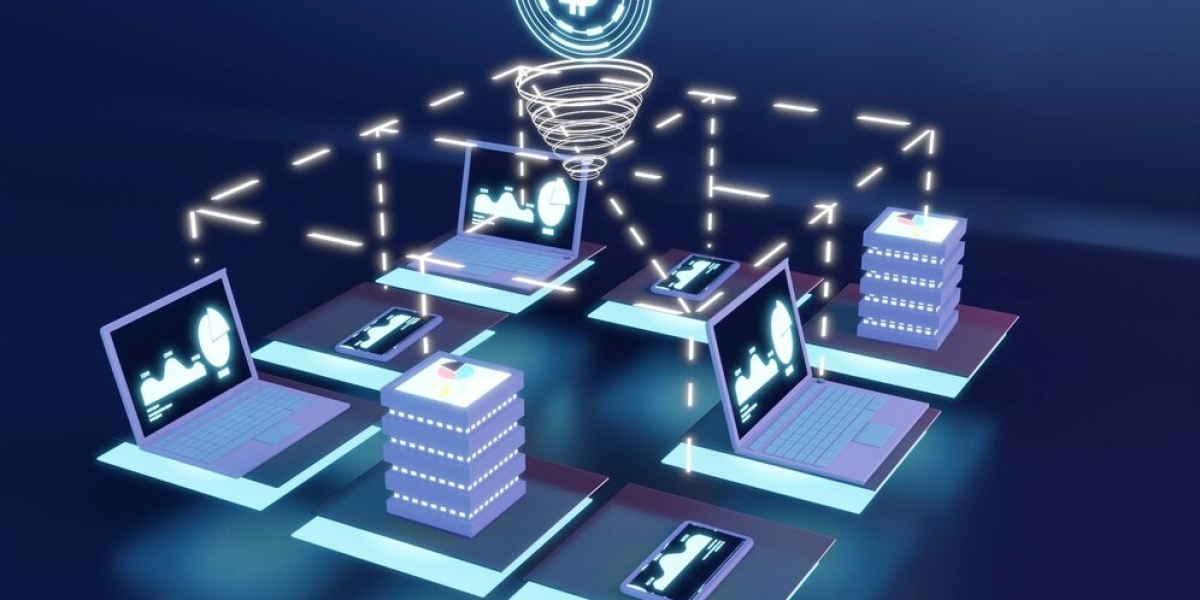Understanding Blockchain: The Basics
At its core, a blockchain is a decentralized, distributed ledger that records transactions across a network of computers. This structure ensures that data is secure, transparent, and immutable. Each block in the chain contains a list of transactions, a timestamp, and a link to the previous block, forming a continuous chain of information. Here are some key features that define blockchain technology:
Decentralization: Unlike traditional databases managed by a central authority, blockchain operates on a peer-to-peer network. Each participant (node) has a copy of the entire blockchain, ensuring transparency and reducing the risk of centralized control or failure.
Immutability: Once data is recorded on a blockchain, it cannot be altered or deleted. This feature guarantees the integrity and reliability of the information, making it an ideal solution for applications requiring robust audit trails.
Security: Blockchain employs advanced cryptographic techniques to secure data. Transactions are verified by network consensus, making it extremely difficult for malicious actors to manipulate the system.
Transparency: All transactions on a blockchain are visible to all participants, promoting trust and accountability. This transparency is particularly valuable in industries where trust is paramount, such as finance and supply chain management.
The Journey of Blockchain Development
Developing blockchain solutions involves several stages, from conceptualization to deployment. Here’s a simplified roadmap to blockchain development:
Ideation and Use Case Identification: The first step is to identify a clear use case where blockchain can add value. This involves understanding the specific problems that blockchain can solve and defining the goals of the project.
Choosing the Right Blockchain Platform: Several blockchain platforms are available, each with its own strengths and capabilities. Popular platforms include Ethereum, Hyperledger, and Binance Smart Chain. The choice depends on factors such as scalability, security, and the nature of the application.
Designing the Architecture: This phase involves designing the architecture of the blockchain solution, including the consensus mechanism, data structures, and smart contract functionality. Smart contracts are self-executing contracts with the terms directly written into code, enabling automated and trustless transactions.
Development and Testing: Developers write the code for the blockchain application, often using languages such as Solidity (for Ethereum). Rigorous testing is crucial to identify and fix vulnerabilities, ensuring the robustness and security of the solution.
Deployment and Maintenance: Once developed and tested, the blockchain application is deployed on the chosen network. Continuous monitoring and maintenance are essential to address any issues, implement updates, and ensure optimal performance.
Real-World Applications of Blockchain
Blockchain’s versatility opens doors to a multitude of applications across various industries:
Finance: Blockchain enables secure and transparent financial transactions, reducing fraud and operational costs. Cryptocurrencies, decentralized finance (DeFi) platforms, and cross-border payments are prominent examples.
Healthcare: Blockchain can revolutionize healthcare by ensuring the secure sharing of patient data, improving interoperability between healthcare providers, and streamlining administrative processes.
Supply Chain: By providing a transparent and immutable record of transactions, blockchain enhances supply chain visibility, reduces fraud, and improves traceability of goods.
Real Estate: Blockchain can simplify property transactions by providing a transparent and secure platform for recording ownership, reducing paperwork, and speeding up processes.
Voting Systems: Blockchain offers a secure and transparent method for conducting elections, reducing the risk of fraud and enhancing voter confidence.
Challenges and Future Prospects
Despite its potential, blockchain development faces several challenges. These include scalability issues, energy consumption (particularly in proof-of-work systems), regulatory uncertainties, and the need for widespread adoption. However, ongoing research and development are addressing these challenges, paving the way for more efficient and sustainable blockchain solutions.
The future of blockchain is promising, with advancements in areas such as interoperability, consensus mechanisms, and integration with emerging technologies like artificial intelligence and the Internet of Things (IoT). As blockchain continues to evolve, its impact on industries and society at large will only grow, unlocking new possibilities and driving innovation.
Conclusion
Blockchain development represents a frontier of technological innovation, offering solutions to some of the most pressing challenges in various sectors. By embracing blockchain, businesses and developers can create more secure, transparent, and efficient systems, heralding a new era of digital transformation. As we continue to explore and harness the power of blockchain, the possibilities are boundless, promising a future where trust and technology converge seamlessly.







